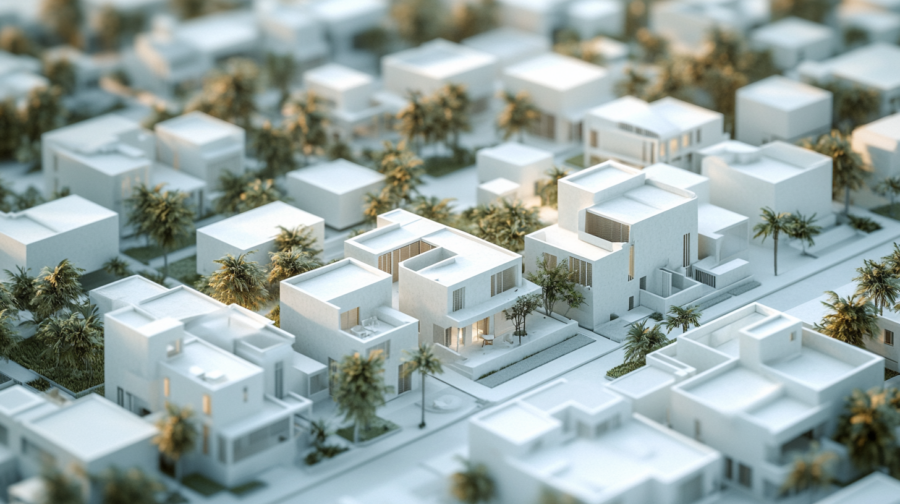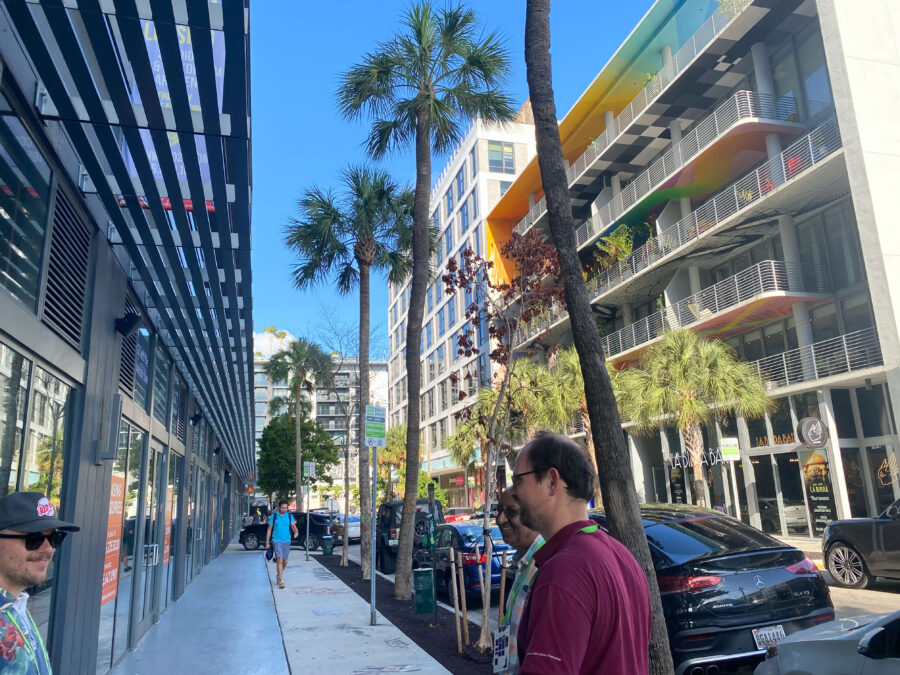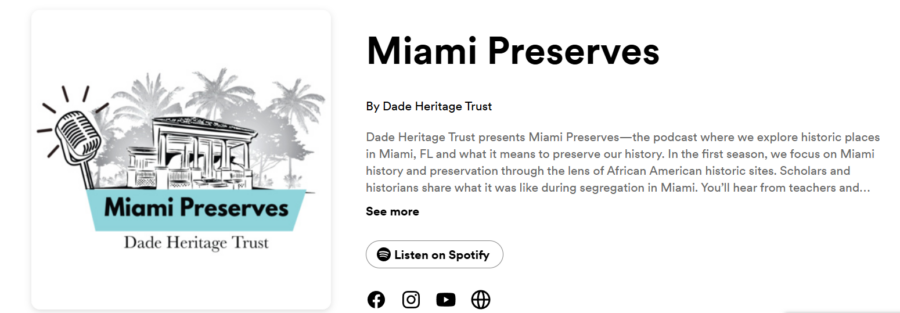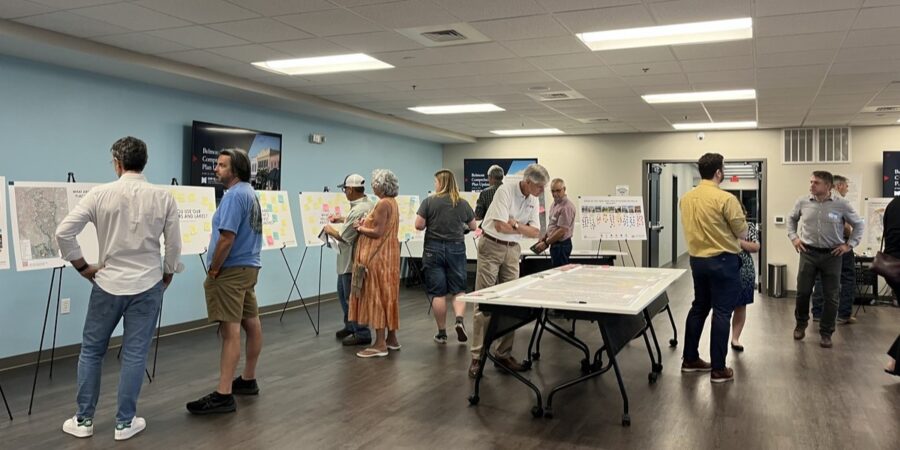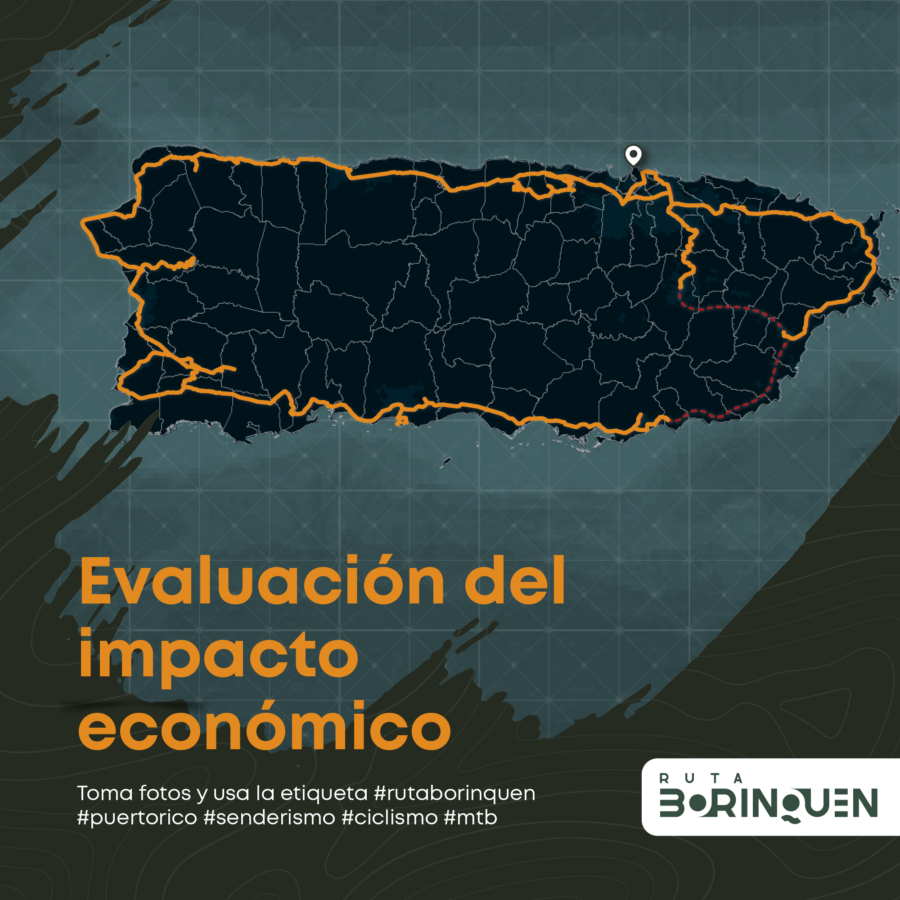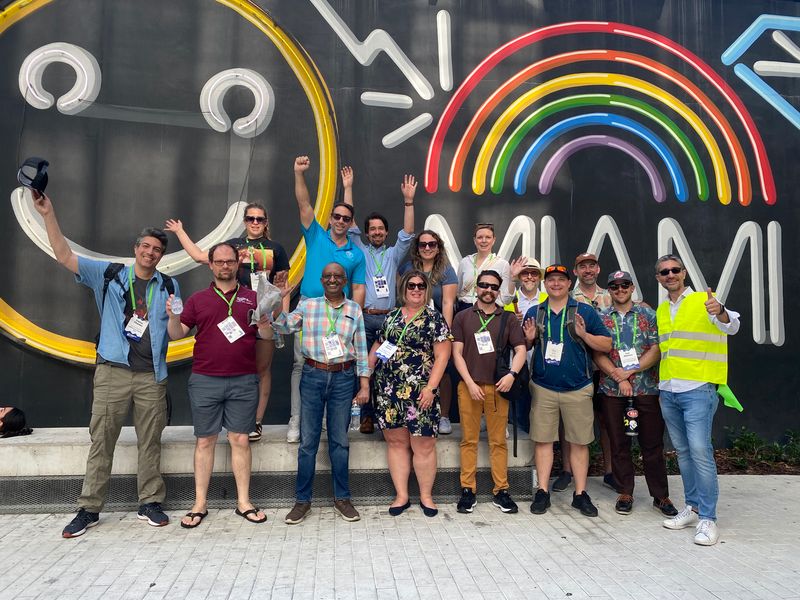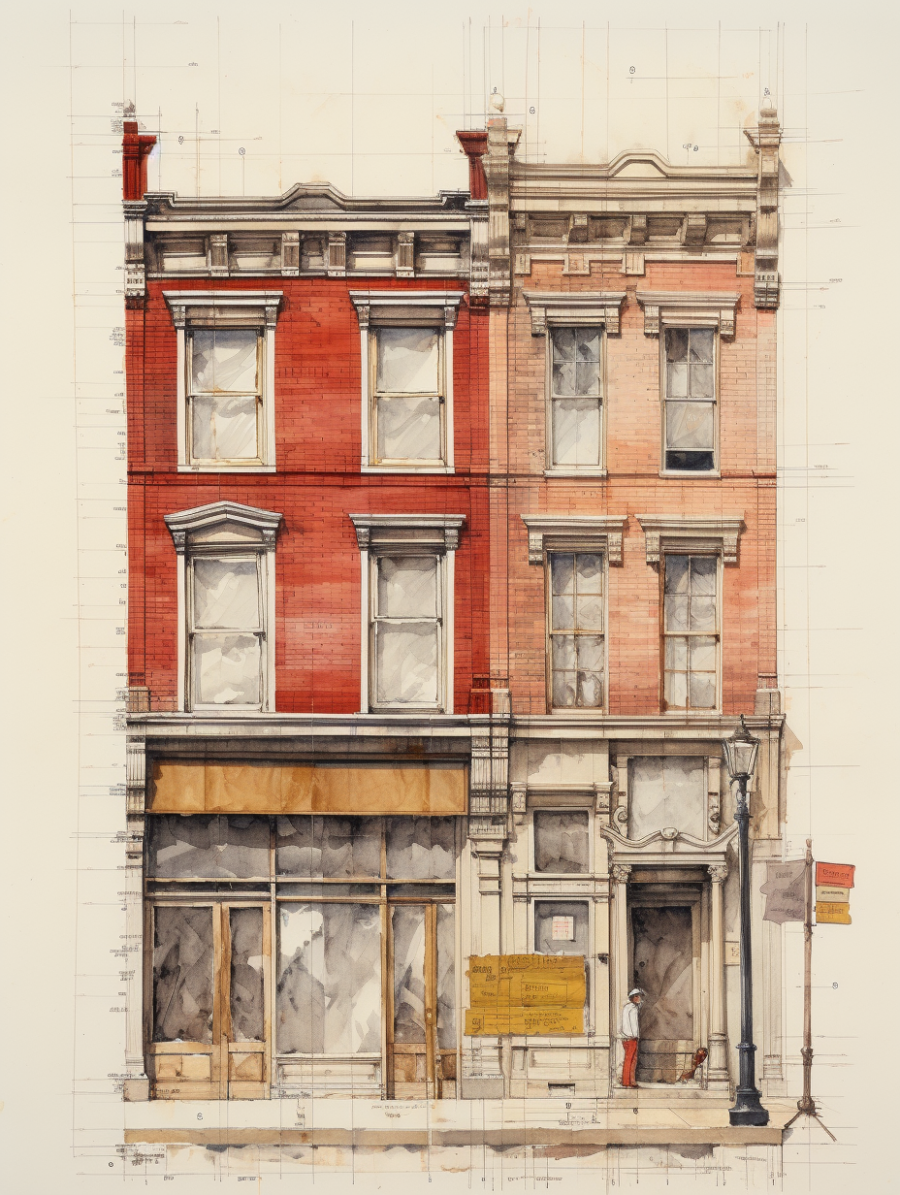our
news
AWARDS, ACCOLADES, PUBLICATIONS AND NEWS.
Are you passionate about shaping resilient, vibrant communities? Do you believe in the power of innovative, context-driven design? Plusurbia Design is looking for a creative Urban Designer to join our dynamic team.Position: Urban DesignerLocation: Miami, FLType: Full-TimeResponsibilities:Develop innovative urban design solutions for diverse projects, including master plans, community development, and public space design.
Collaborate with interdisciplinary teams to integrate planning, architecture, and landscape architecture into cohesive urban designs.
Conduct site analyses, conceptual design, and detailed design work, ensuring alignment with project goals and Plusurbia's philosophy.
Engage with communities and stakeholders to gather insights and incorporate feedback into design processes.
Prepare and present design proposals, reports, and visualizations to clients and public agencies.
Stay updated on urban design trends, zoning regulations, and sustainable practices to bring fresh ideas to projects.Required Qualifications and Skills:Bachelor’s degree in Architecture, Urban Design, or related field.
Strong portfolio demonstrating experience with urban design projects, including master plans, public spaces, and community developments.
Proficiency in design software such as AutoCAD, Adobe Creative Suite, Lumion, SketchUp, and GIS.
Excellent verbal, written, and graphic communication skills, with the ability to articulate design concepts clearly.
A passion for sustainable, resilient, and community-oriented design.
Self-motivated with good time management skills.Why Plusurbia Design?Plusurbia Design is an award-winning urban planning and design firm dedicated to creating inclusive, sustainable, and context-sensitive urban spaces. We work closely with communities, stakeholders, and local governments to deliver projects that enhance the quality of life and reflect the unique DNA of each place we touch. Our approach is rooted in the principles of placemaking, community engagement, and sustainable development.Be part of a growing, forward-thinking firm that values creativity, sustainability, and community impact.
Work on transformative projects that make a real difference in urban environments, from Regional Comprehensive plans to neighborhood and district revitalization and design.
Collaborate with a talented and passionate team in a supportive, innovative work environment.
Enjoy opportunities for professional growth and career advancement.Salary and Benefits:Salary – commensurate with experience and competitive in the marketplace.
401K ‘Elective Safe Harbor’ – Up to 3% of salary.
End-of-year performance-based bonus.
Benefits include personal days off, holidays, individual medical, dental, and vision insurance, and short—and long-term disability insurance.How to Apply:We'd love to hear from you if you're ready to contribute to meaningful urban design projects and grow with a leading firm!Send your resume, portfolio, and cover letter detailing your experience and why you’re a great fit for Plusurbia Design to careers@plusurbia.com.Applications that don't meet the requirements will be dismissed. Format the email with the subject line ‘Urban Designer Position.’
Portfolio, Resume, & Cover Letter must be in PDF format attached to the email. Deadline: Applications will be accepted until September 25th, 2024.Plusurbia Design is an equal-opportunity employer. We celebrate diversity and are committed to creating an inclusive environment for all employees.Join us in shaping the cities of tomorrow—today!
Article was originally published in the Coconut Grove Spotlight
September 3rd, 2024 When my son gets hurt, I console him with the phrase “sana, sana, colita de rana,” which loosely translates to "heal, heal, little frog's tail." It makes no real sense, but it always makes him feel better. However, when he’s genuinely injured, we seek professional help.Similarly, the "Live Local Act" (SB102) bill, enacted with minimal input from city planners and architects, seeks to address Florida's housing crisis with good intentions but without professional precision and foresight. This law will reshape our cities by streamlining development and promoting higher-density housing in commercial and industrial areas without the expert insight to understand its impact on our communities and the essential services required for healthy urban strategic growth. It’s akin to saying, “Sana, sana, SB102 de rana,” hoping the housing crisis will be resolved without side effects.When tackling affordability, it is vital to prioritize healthy strategic growth. The bill’s authors, though knowledgeable about zoning, would have benefited from a deeper understanding of how cities function, their unique qualities, histories, and diverse characters. However, with 411 municipalities and over 10,000 neighborhoods in Florida, who could cater to the specific needs of each one? No one can, and that’s why a blanket approach to affordability is ill-conceived.Height and density aren't suitable everywhere. SB102 neglects resilient measures by promoting large-scale development in vulnerable coastal and flood-prone areas. It neglects essential infrastructure like roads, emergency services, schools, and parks—elements covered in Comprehensive Plans to guide strategic growth and ensure livability. Placing housing indiscriminately in commercial and industrial zones risks overwhelming infrastructure, worsening congestion, and straining utilities. Without careful planning and provision of these services, new affordable developments will be built in the wrong places without proper services, amplifying the issues SB102 aims to resolve.A critical flaw in SB102 is assuming that density requires height. Florida’s 1920s and 30s small-scale apartments show that small, high-density buildings exist compatibly within neighborhoods. With limited parking and minimal amenities, these buildings have low HOAs and construction costs and maintain affordable rents. For instance, Miami's 1920s central corridor buildings, like 2401 Overbrook St in Coconut Grove, achieve 60-150 dwelling units per acre with just 2-3 stories, blending seamlessly into the urban fabric. Options like ADUs, triplexes, and courtyard apartments further enhance neighborhood diversity and housing availability. This doesn’t mean less housing, but more integrated rather than concentrated in towering structures. Instead of SB102’s ‘super-size-it’ approach, efficient, quality affordable housing works better when introduced strategically throughout a community.By prioritizing maximum heights and large-scale developments, SB102 overlooks the diverse housing types that have historically made our neighborhoods vibrant and inclusive. These housing types offer various densities while maintaining a harmonious scale, ensuring that buildings complement rather than overshadow each other. The bill needs to provide solutions that address affordability while preserving neighborhood character. Large-scale developments often require extensive land assemblies, encouraging land banking, speculation, and displacement of existing residents and businesses, ultimately exacerbating the problems the law aims to solve—particularly in hyperinflated markets—undermining the character and scale of established neighborhoods.While the legislation encourages development near transit by reducing parking requirements, it must prioritize it. This is an opportunity to encourage growth around transportation nodes and corridors, gradually decreasing height to match the existing neighborhoods’ character with smaller, scaled-down infill projects that blend seamlessly into the urban fabric. Such a strategy would preserve the character of lower-rise areas, contributing to balanced growth and maintaining community integrity while accommodating new residents to support public transit. This approach would reduce congestion and promote sustainable transit-supportive environments, motivating cities to enhance transportation options and reducing car dependency and the need for onerous parking mandates.The law must seriously address the impact of parking on housing affordability. Mandating parking on any new development imposes significant financial burdens, driving up the cost of housing and making units less affordable. While parking may be desirable, especially in areas with limited public transit, existing stringent parking requirements increase development costs and exacerbate affordability issues. Parking should be optional, not mandatory. Numerous cities nationwide are eliminating parking minimums. Although not all cities may be ready for this, SB102 should require parking exemptions, at least in all TOD areas within half a mile, allowing the market to determine parking needs and compelling cities to invest in alternative mobility solutions. Parking should be considered an amenity, not a requirement, as the cost of structured parking—averaging $30,000 per space (or $60,000 if two spaces are required)—inevitably results in higher housing prices.A more profound issue lies in how 'affordable' is calculated. The current method using Area Median Income (AMI) is too broad and often fails to reflect real household economics, particularly in gentrifying or economically diverse neighborhoods where wealthier newcomers skew the median income. As a result, the 'affordable' units created under this legislation are often still out of reach. For example, in Miami-Dade, 'affordable' rents at 120% AMI are set at $2,554 for a one-bedroom and $3,063 for a two-bedroom unit. To afford this under HUD guidelines—where housing costs should be no more than 30% of income—a family of three would need to earn $122,520 annually, far above the county's median income of $79,400 and even more unrealistic in areas like the West Grove, at $50,000. Without a more precise approach considering local economic conditions, the housing produced under SB102 will remain inaccessible to those who truly need it, creating low-end market units rather than genuine affordable housing.Localized income assessments would ensure more realistic AMIs to achieve true affordability. The current thresholds could exacerbate displacement, pushing existing residents out of their communities. A fairer, more calibrated AMI and access to essential services like schools, parks, and transportation are crucial for creating sustainable and equitable housing solutions. Without these adjustments, SB102 risks perpetuating the housing crisis and worsening inequality.The law has sparked concerns among urban planners and local governments by overriding zoning laws and imposing a one-size-fits-all approach that disregards the unique needs of individual communities. This preemption limits local authorities' ability to develop strategies that align with their strategic growth plans, neighborhoods' character, and historical context, creating tension between state and local objectives.Much like the issues that led to the 1776 Declaration of Independence, where the 'consent of the governed' was crucial, this top-down approach from Tallahassee highlights a significant disconnect. Lawmakers in the state capital are not and cannot be attuned to the nuances of life in every community, much less in South Florida. Given the distinct challenges and opportunities here, perhaps it’s time to consider whether South Florida requires more autonomy to ensure that development policies are crafted with a deep understanding of our region’s unique context and needs.
By Andres Viglucci
June 22, 2024 5:00 AMMiami’s Wynwood may be the hottest, hippest neighborhood in America’s hottest city: A dynamic urban fusion of repurposed industrial buildings and warehouses interspersed with new, low-rise buildings housing shops, bars and restaurants, offices and apartments, all of it steeped in artful design and curated graffiti murals. Its success is no accident. The reinvigorated Wynwood, once a derelict industrial zone, is the deliberate result of unique planning guidelines and development limits painstakingly laid out a decade ago by district property owners and city of Miami planners. The special Wynwood regulations are backed by a distinct vision — for a dense yet human-scaled alternative to the new high-rise forests of Brickell and Edgewater. But just as they begin to bear fruit, the carefully laid plans for Wynwood are threatened by a controversial new state law, the Live Local Act, which overrides local building controls and encourages developers to supersize projects in exchange for setting aside apartments as ostensibly affordable housing. Critics say Live Local is a giveaway to developers and the promised affordable housing is anything but that.Read more at: https://www.miamiherald.com/news/local/community/miami-dade/article289287445.html#storylink=cpy
Dade Heritage Trust (DHT) proudly announces the launch of its new podcast, "Miami Preserves." This podcast, produced in collaboration with DHT’s Historic Places, Green Spaces education program, delves into the rich tapestry of Black history in Miami. Through captivating interviews and archival recordings, "Miami Preserves" illuminates the stories, struggles, and achievements of the African American community in this vibrant city.Inaugural Episode and Series LaunchThe inaugural episode features our very own Historical Preservation Specialist, Megan Mclaughlin. Listen to this insightful discussion on America's African American history, kicking off a content-rich four-part series. The trailer for this eagerly anticipated series has already been released, generating excitement for the first episode, which will be available on all major podcast platforms starting June 26, 2024.Listen and SubscribeListeners can access the trailer and subscribe to "Miami Preserves" here. This series aims to celebrate Miami’s African American cultural heritage, preserving and honoring the community's significant contributions to the city’s history and identity.Join the JourneyJoin DHT on this compelling journey as "Miami Preserves" brings to life the stories that have shaped the African American experience in Miami. Don't miss this unique opportunity to connect with the past and celebrate the vibrant cultural heritage that continues to enrich the city.
Belmont, NC–Plusurbia is thrilled to announce the completion of a successful multi-month public engagement campaign in the City of Belmont. Featuring eight community workshops, informative presentations, Q&A, small group meetings and an online survey, the initiative provided essential guidance for the city’s Comprehensive Land Use Plan update.Altogether, our team received nearly 1,600 comments on Belmont’s opportunities, challenges and aspirations, far exceeding community involvement during the last plan update in 2018. We also invested over two weeks of in-person time, talking with community stakeholders and getting to know Belmont, foraging a deeper connection with residents, business owners and community leaders.
The Puerto Rican government is making strides in preserving its rich rail heritage with the introduction of House Bill (PC 2141). Filed by five representatives, this bill seeks to enshrine the preservation of 19th and 20th-century railroad routes as public policy. It also directs government entities to create a non-motorized transportation route for historical, cultural, and ecological tourism, proposing the development of the Borinquen Trail.Historical SignificancePC 2141 highlights that by the late 19th century, Puerto Rico boasted approximately 1,000 kilometers of railroads, positioning it as one of the regions with the most extensive railroad networks per square kilometer. These railroads were integral to the island’s development and historical landscape.Efforts by Plusurbia DesignPlusurbia Design has been working to preserve this legacy since 2018. The Borinquen Trail encompasses a 426-mile corridor aimed at safeguarding the historical importance of Puerto Rico’s old train tracks. This initiative seeks to enhance the island’s cultural heritage, support sustainable tourism, and engage the community.The Borinquen Trail: A Vision for the FutureThe Borinquen Trail will feature a multimodal ecological route designed for biking and pedestrian use, traversing the Puerto Rican archipelago. It will link various natural, historical, cultural, tourist, and gastronomic attractions along the old rail routes. This pioneering project promotes health, stimulates economic and tourist activity, and fosters a vibrant cycling and pedestrian community, all while preserving and celebrating Puerto Rico’s natural, historical, and cultural heritage.
On May 8 and 9, 2024, Miami hosted an insightful walkshop titled "Metamorphosis of a District: How the Design District, Midtown, and Wynwood Emerged as Miami's Preeminent Revitalization Experiments." This event, held as part of the National Association of City Transportation Officials (NACTO) Conference, was co-led by urban planning experts Juan Mullerat, Graham Jones from the City of Miami, and Cesar Garcia-Pons of Garcia+Pons and Associates, LLC.
We use cookies
We use our own and third-party cookies to be able to correctly offer you all the functionalities of the website for analytical purposes. You can accept all cookies by clicking "Accept cookies", obtain more information in our
Website Policyor configure/reject their use by clicking on Settings".
Accept cookies
SettingsBasic cookie informationConfirm preferences
This website uses cookies and/or similar technologies that store and retrieve information when you browse. In general, these technologies can serve very different purposes, such as, for example, recognizing you as a user, obtaining information about your browsing habits or customizing the way in which the content is displayed. The specific uses we make of these technologies are described below. By default, all cookies are disabled, except for the technical ones, which are necessary for the website to work. If you wish to expand the information or exercise your data protection rights, you can consult our Website Policy.
Accept cookiesManage preferencesTechnical and/or necessary cookies
Always active
Technical cookies are those that facilitate user navigation and the use of the different options or services offered by the web such as identifying the session, allowing access to certain areas, filling in forms, storing language preferences, security, facilitating functionalities. (videos, social networks…).
Analytic Cookies
Analysis cookies are those used to carry out anonymous analysis of the behavior of web users and that allow user activity to be measured and navigation profiles to be created with the objective of improving websites.


